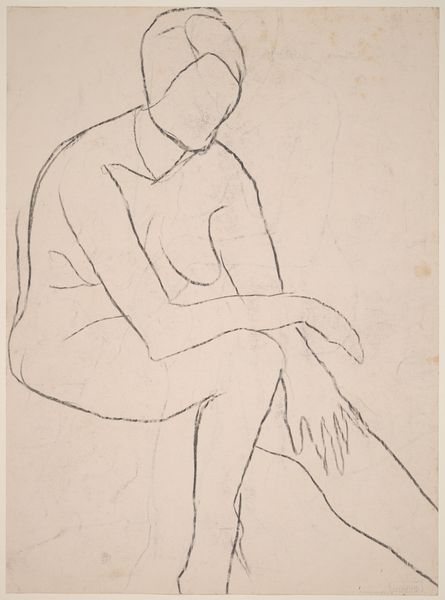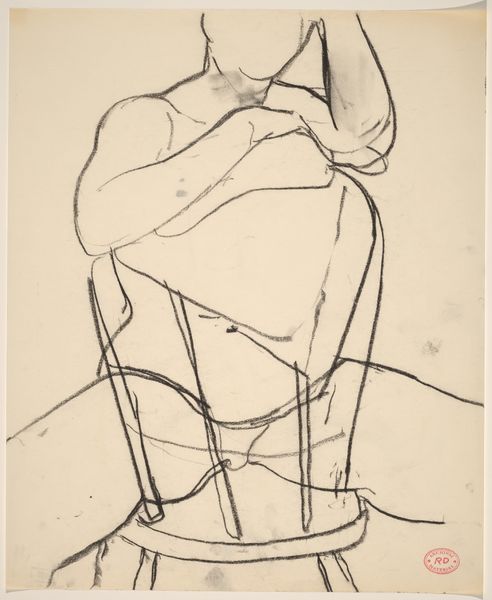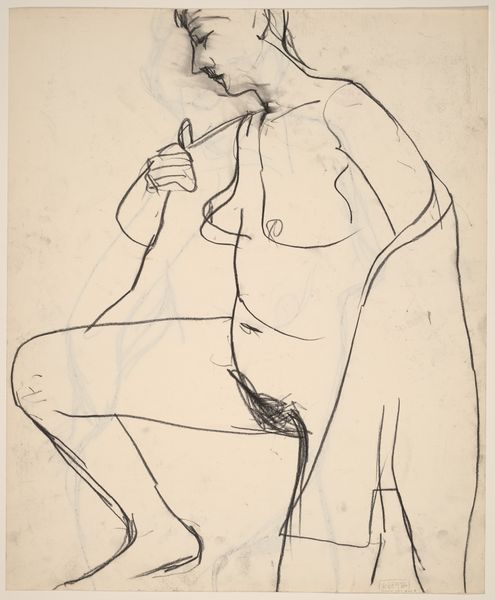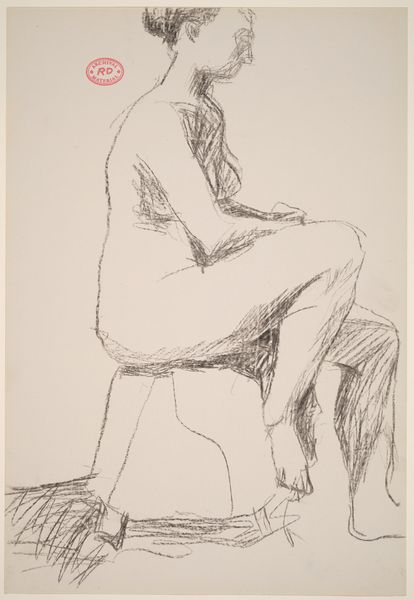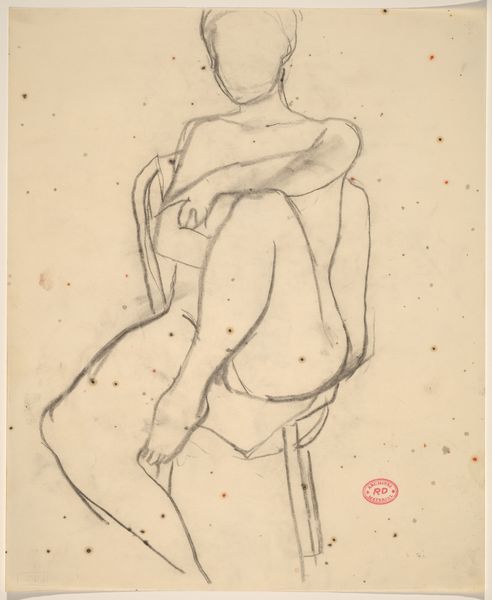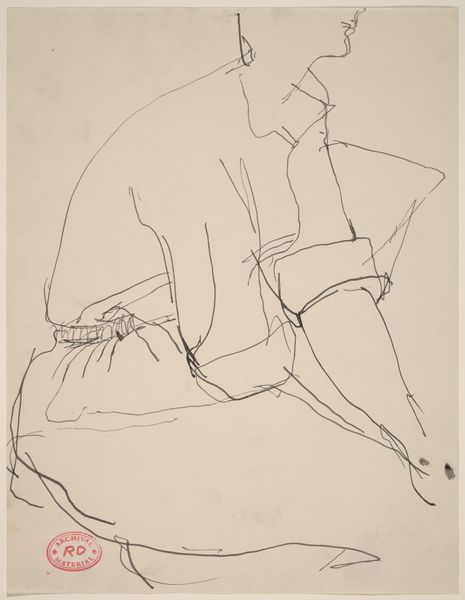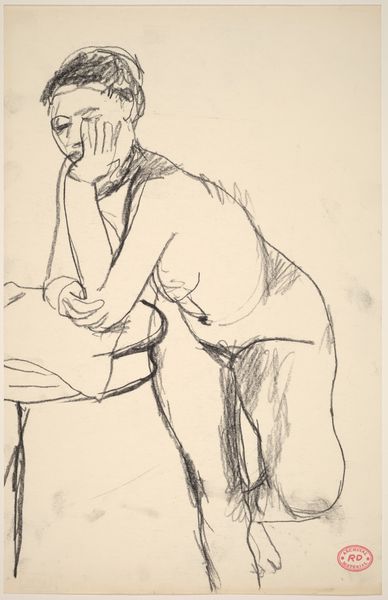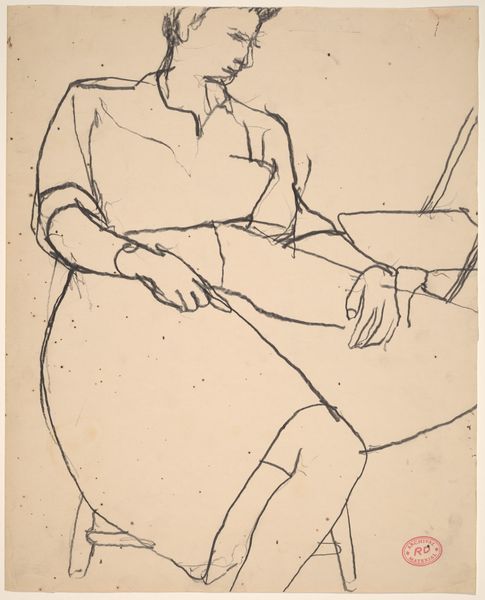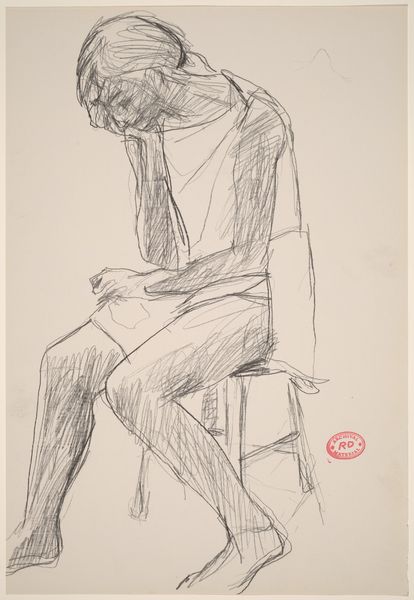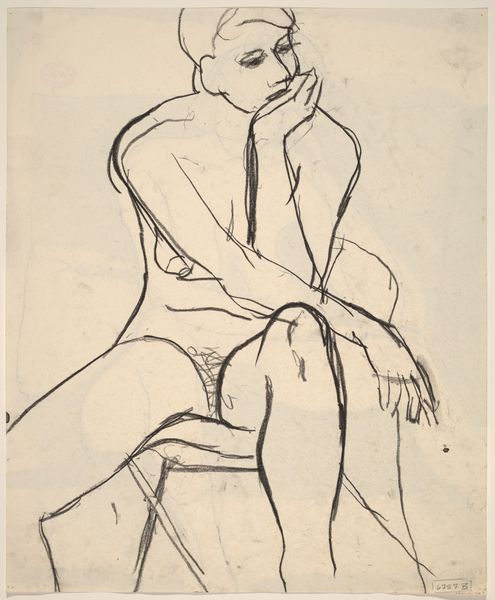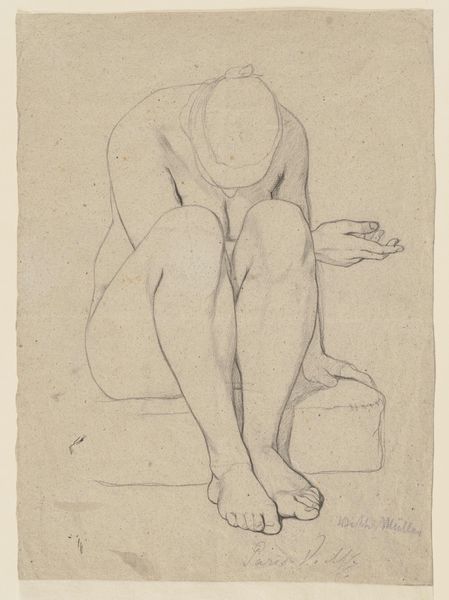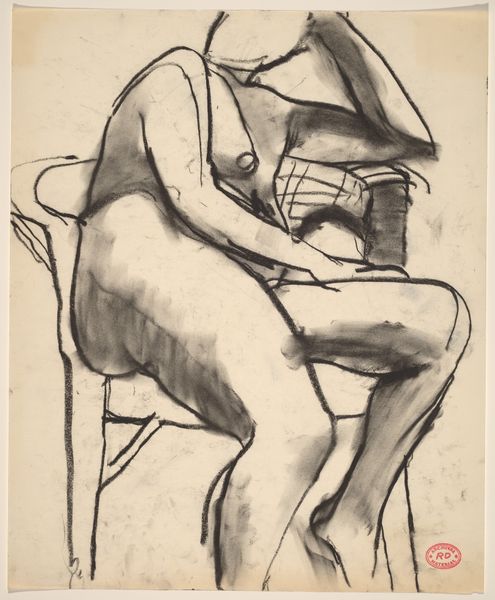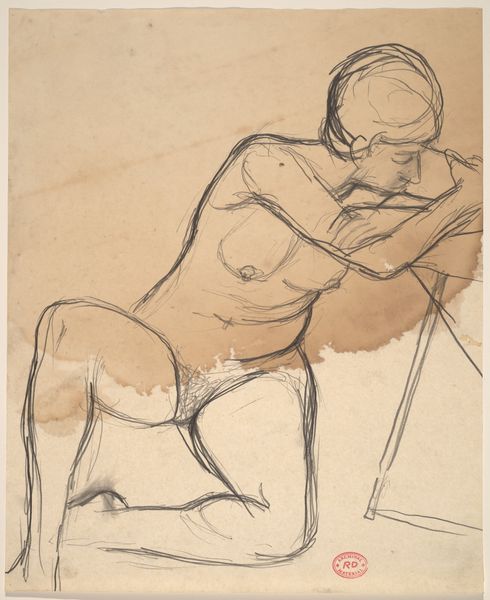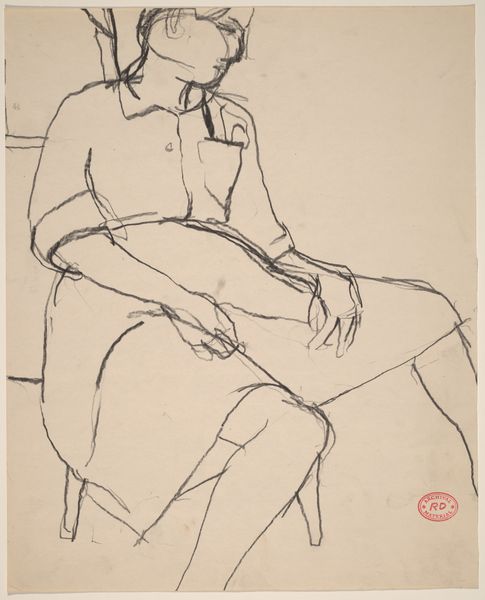![Untitled [seated nude with resting her head on her retracted leg] [verso] by Richard Diebenkorn](/_next/image?url=https%3A%2F%2Fd2w8kbdekdi1gv.cloudfront.net%2FeyJidWNrZXQiOiAiYXJ0ZXJhLWltYWdlcy1idWNrZXQiLCAia2V5IjogImFydHdvcmtzLzI0Mjg3ZDk1LTliZmEtNGNlMC1iNTI5LWNlZGNmYTY5ZmMxOS8yNDI4N2Q5NS05YmZhLTRjZTAtYjUyOS1jZWRjZmE2OWZjMTlfZnVsbC5qcGciLCAiZWRpdHMiOiB7InJlc2l6ZSI6IHsid2lkdGgiOiAxOTIwLCAiaGVpZ2h0IjogMTkyMCwgImZpdCI6ICJpbnNpZGUifX19&w=3840&q=75)
Untitled [seated nude with resting her head on her retracted leg] [verso] 1955 - 1967
0:00
0:00
drawing, ink
#
abstract-expressionism
#
drawing
#
ink drawing
#
pencil sketch
#
figuration
#
bay-area-figurative-movement
#
ink
#
nude
Dimensions: overall: 43.2 x 35.6 cm (17 x 14 in.)
Copyright: National Gallery of Art: CC0 1.0
Curator: Richard Diebenkorn, between 1955 and 1967, created this untitled ink drawing. The subject appears to be a seated nude with her head resting on her retracted leg. What are your immediate impressions? Editor: It feels… vulnerable, exposed, but also withdrawn, like a snail retreating into its shell. The starkness of the line work enhances this raw emotional quality, don’t you think? There's almost a brutal honesty to its simplicity. Curator: That's astute. Diebenkorn often explored the push and pull between abstract expressionism and figuration. Here, the linear simplicity echoes classic nude studies, while the almost frantic, searching lines around the figure suggest a subconscious wrestling. Do you find a tension there? Editor: Absolutely! It's like he's both revealing and concealing at the same time. The restless lines hint at unseen energy, but she still embodies introspection. Is the figure burdened with grief or simply lost in thought? Maybe this is how loneliness presents itself as something beautiful, spare, and strangely comforting? Curator: The pose itself is steeped in historical connotations. It evokes the "melancholia" figure, a symbol of creative frustration, deep sorrow and psychological complexity. The way her head is hidden reinforces the themes of internal struggle and introspection. The image carries on, a memory across generations. Editor: It's as if she's deliberately turning away from the viewer. What does it tell you, given Diebenkorn’s broader oeuvre, this figure turned inward? It invites you to project your own feelings onto the empty space where her face should be. A visual Rorschach test! Curator: Perhaps that is Diebenkorn's intent: for the viewer to confront their own emotional landscape, reflected in the symbolic language of posture and absence. In its understated way, it transcends pure representation to explore universal themes. Editor: Agreed. It makes you wonder, doesn't it, about all those silent, unseen battles we all wage within ourselves, depicted in a simple, elegant, and heartbreaking way.
Comments
No comments
Be the first to comment and join the conversation on the ultimate creative platform.
